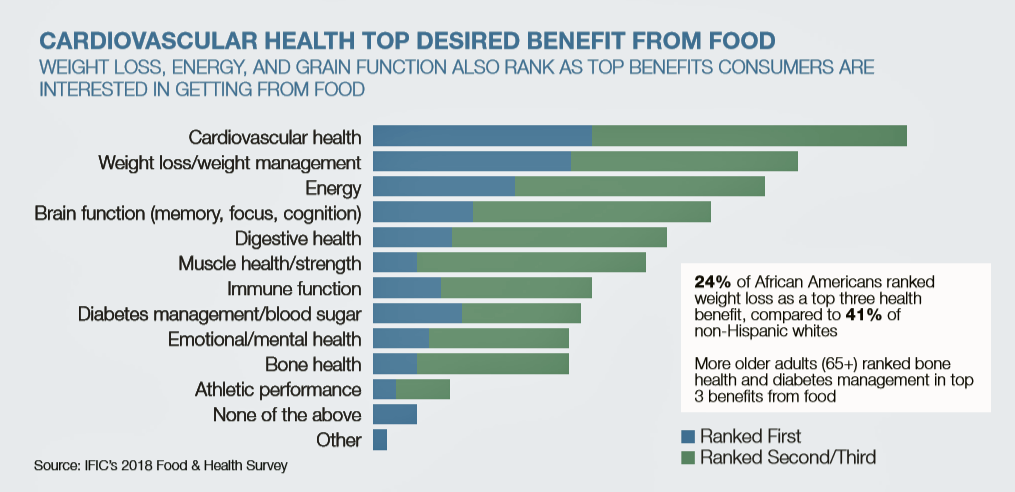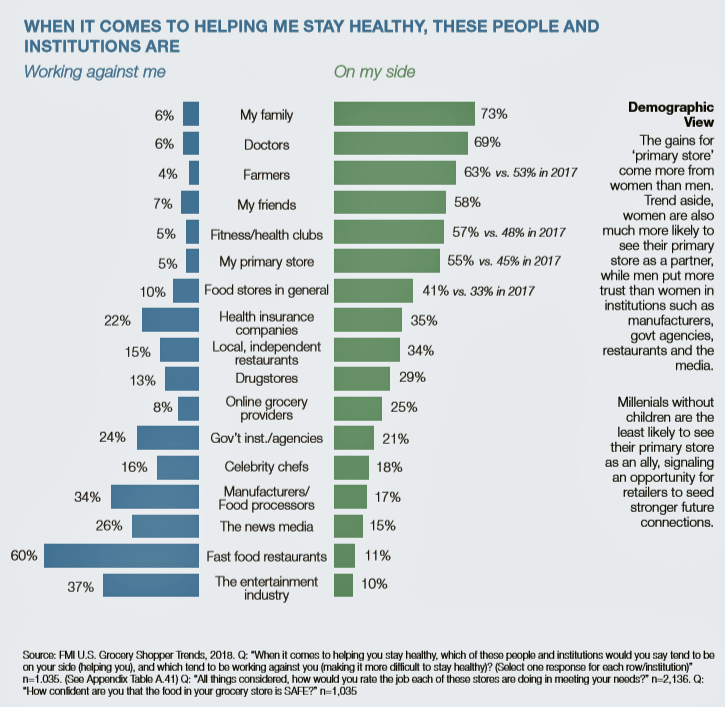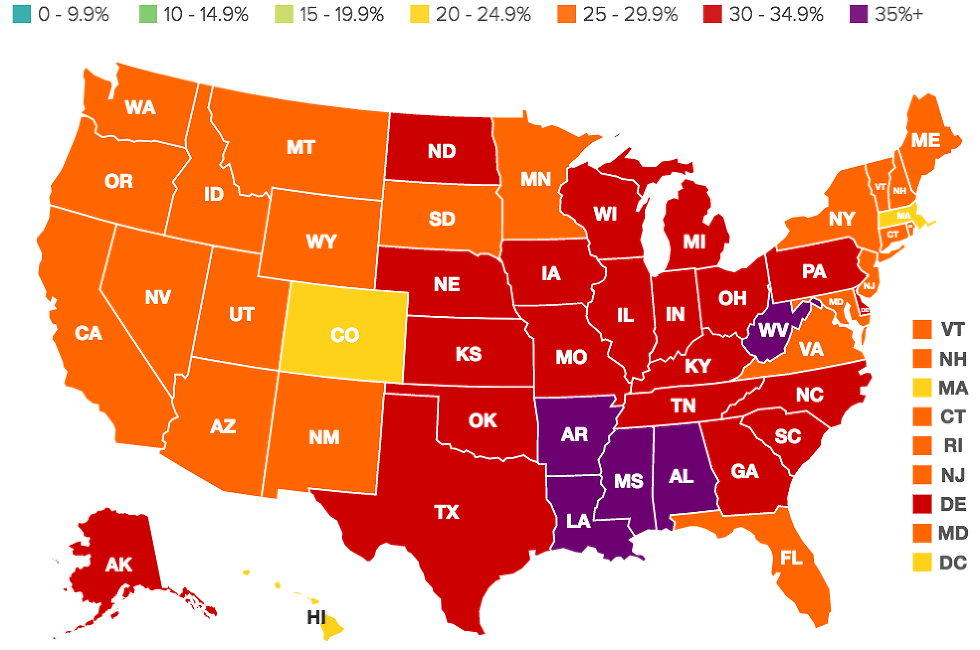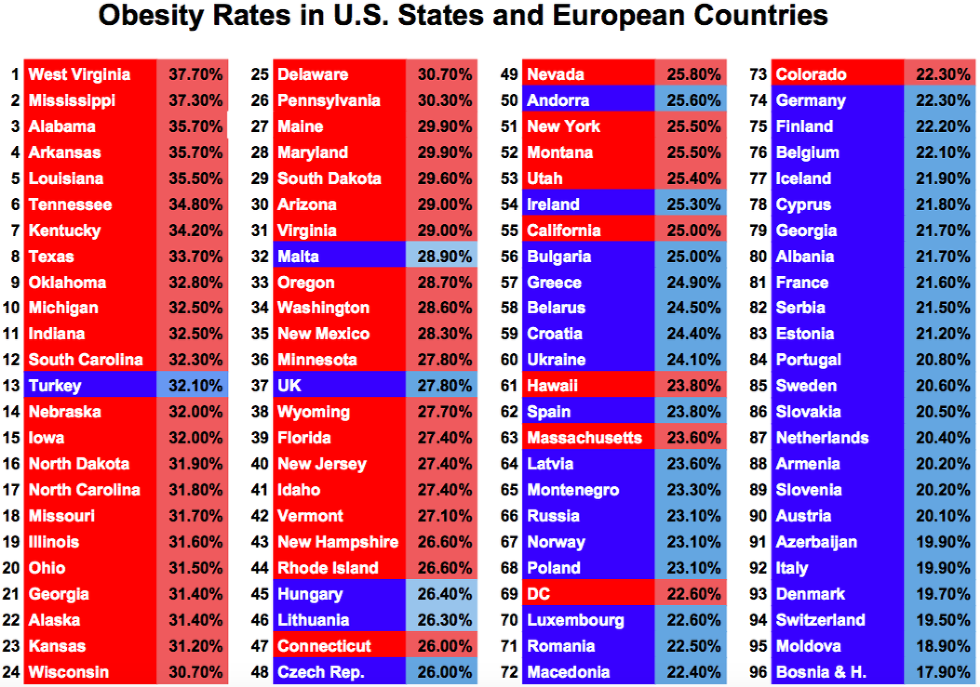Consumers put food front-and-center when thinking about their health. Viewing food-as-medicine is going mainstream for health consumers, who look beyond the “medicine” in that phrase toward a broader concept of personal well-being. This is the theme of a new report from the FMI Foundation called The Power of Health and Well-Being in Food Retail.
The report’s insights are based on surveys FMI has conducted over the past two years, as the Foundation has observed that consumers broadening their definition of health to include emotional health, energy levels, and sleep quality.

The consumer-as-medical-bill-payor is now looking at foods with health benefits, first and foremost for heart health. It’s interesting to note that wearable tech for health in 2019 includes many innovations embedded into consumer-facing devices that relate to heart function, such as the Omron HeartGuide, and FDA-cleared smartwatch that takes blood pressure from the wrist for the first time, Withings Move ECG, the Garmin Vivosport (suitable for athletic use), and the Moov Now (waterproof and great for swimmers).
While interest in specific conditions and medical areas vary across demographic and psychographic groups, there are some generalities that cross most people: two-thirds of people believe fresh produce is integral to a balanced diet. So “produce stars as a retail health anchor,” FMI believes. Fresh food also happens to be one of the barriers to more consumers buying groceries online, which Amazon has discovered in its grocery business.
The vast majority of consumers say they eat healthier at home than when they eat out. Thus, the growth of subscription food boxes that emphasize both healthy eating along with social factors. “Eating together,” whether with families or friends, is seen by most consumers to have healthy benefits, all baked into the concept of “eating well,” FMI calls out.

The top retail channels consumers use for health and wellness are supercenters and discount stores (36%), grocery stores (34%), drug stores and pharmacies (32%), club stores (17%), and natural food/health food stores (16%). The latter, combined with farmers’ markets and special food shops, tend to be frequented by consumers with greater commitment to healthy eating styles.
But these stores aren’t necessarily seen as being “on my side” to help me bolster my health, consumers say. Instead, the most trusted people and institutions for making health through food are “my family,” doctors, farmers, friends, fitness clubs and gyms, and “my primary store” — that is, the retail channel most frequently shopped by the consumer.
Consumers point to some organizations that they perceive may be working against their better health: these include fast food manufacturers, the entertainment industry, food processors (“Big Food”), the media, government agencies, and health insurance companies.
Food stores gained in trust between 2017 and 2018, illustrating the opportunity that a consumer’s favorite grocery store can leverage in a trusted relationship with a person keen on health.
Private labels from these stores, and particularly when there’s organic food in the can or package, is a further trust equity factor. Private labels are lower-cost than national brands, bringing a flavor of financial wellness to the consumer purchase. (Remember, health consumers define well-being beyond medical issues, to include emotional, social and fiscal fitness).
Other departments in the store can also shine health halos to reinforce the trusted consumer relationship, such as personal care, fashion, household products, and general merchandise.
As grocery stores expand their footprints and services as health destinations, they are hiring specific professionals to support this mission: pharmacists, nutritionists, wellness counselors, and healthcare professionals like doctors, nurse practitioners, and nurses to staff on-site clinics. One-third of stores in FMI’s survey have in-store retail health clinics.
We can expect food retailers to, literally, cater to consumers’ growing embrace and purchase of food-as-medicine. Watch your own primary grocery store continue to morph in this way, well beyond the perimeter of the store.
 Health Populi’s Hot Points: Last week, The Lancet published a comprehensive report on The Global Syndemic of Obesity, Undernutrition, and Climate Change. The report covers the world, but has particular significant for the United States as our nation must confront the year-by-year growth of obesity and other dietary risks that the paper discusses for the world’s health citizens.
Health Populi’s Hot Points: Last week, The Lancet published a comprehensive report on The Global Syndemic of Obesity, Undernutrition, and Climate Change. The report covers the world, but has particular significant for the United States as our nation must confront the year-by-year growth of obesity and other dietary risks that the paper discusses for the world’s health citizens.
A “syndemic” is a synergy of epidemics, co-occurring at one time in a place, and interactive with each other in a way that leads to multiple, negative outcomes. The Lancet‘s Commission of writers believes that the triple-threat of obesity, poor nutrition, and climate change compromises the health futures of the world’s people….including Americans.
The systemic drivers underneath this syndemic are food and agriculture, transportation, urban design, and land use. The Commission urges us to consider health futures that weave together these drivers as they interact in (negatively) synergistic ways. Addressing just one policy in this complicated web will not solve the larger challenge.
Among several key messages, I’ll call out one here that’s particularly relevant to healthy eating and addressing what should be an obesity moon-shot in America:
“Create sustainable and health-promoting business models for the 21st century to shift business outcomes from a short-term profit-only focus to sustainable, profitable models that explicitly include benefits to society and the environment.”
 The U.S. map illustrates each of the 50 states’ levels of obesity prevalence: from lows in yellow to highs in red and at the highest-end, purple in the deep southern states of Alabama, Arkansas, Louisiana, Mississippi, and the perennial obese state in the central south, West Virginia.
The U.S. map illustrates each of the 50 states’ levels of obesity prevalence: from lows in yellow to highs in red and at the highest-end, purple in the deep southern states of Alabama, Arkansas, Louisiana, Mississippi, and the perennial obese state in the central south, West Virginia.
Let’s not pat ourselves on the back so quickly if we live in Massachusetts or Colorado, two of the weight-healthier states. Check out the last chart, comparing obesity rates in the U.S. vs. levels in European nations.
Pizza and pasta doesn’t seem to be hurting Italians when it comes to obesity, Danish pastries in Denmark or fondue or chocolate in Switzerland.
That’s because these countries have strong primary care backbones, spend more on social care relative to health care spending, and have other policies that bake in health well beyond medical care.
Health care delivery in the U.S. is at a turning point with a dizzying pace of technology innovation, analytics underpinned by volume-velocity-veracity-and-variety, and unsustainable cost-increasing workflows that deliver poor ROI in terms of health outcomes for individual, population, and public health.
This unsustainable economic model, combined with technology platforms and AI, are motivating some of the big-name mergers and alliances we’ve begun to see begin to re-shape the American health care ecosystem. We must pay attention to these organizations’ roles in health care to ensure there is good-acting for longer-term, sustainable health systems in our communities, large and small, urban and rural, across ethnicities and race and socioeconomic status. We’ve lived in a health care world of disparities and equity gaps. It will be much more productive long-run to build an inclusive health/care community that brings care to people in every ZIP code, regardless of peoples’ genetic codes.
I believe that grocery stores in their communities will play growing roles in health for consumers who seek to engage in overall well-being. In just the last few weeks, Kroger announced rolling out blood testing devices to its pharmacies and clinics; Whole Foods launched dietary assistance online via a digital product catalog; and, Earth Fare, a natural foods store in Asheville, NC, hired a Chief Medical Officer. Watch this space to morph as other grocers, along with hospitals, farmers markets, and food pantries, expand healthy food to people who really need it.




 I'm in amazing company here with other #digitalhealth innovators, thinkers and doers. Thank you to Cristian Cortez Fernandez and Zallud for this recognition; I'm grateful.
I'm in amazing company here with other #digitalhealth innovators, thinkers and doers. Thank you to Cristian Cortez Fernandez and Zallud for this recognition; I'm grateful. Jane was named as a member of the AHIP 2024 Advisory Board, joining some valued colleagues to prepare for the challenges and opportunities facing health plans, systems, and other industry stakeholders.
Jane was named as a member of the AHIP 2024 Advisory Board, joining some valued colleagues to prepare for the challenges and opportunities facing health plans, systems, and other industry stakeholders.  Join Jane at AHIP's annual meeting in Las Vegas: I'll be speaking, moderating a panel, and providing thought leadership on health consumers and bolstering equity, empowerment, and self-care.
Join Jane at AHIP's annual meeting in Las Vegas: I'll be speaking, moderating a panel, and providing thought leadership on health consumers and bolstering equity, empowerment, and self-care.